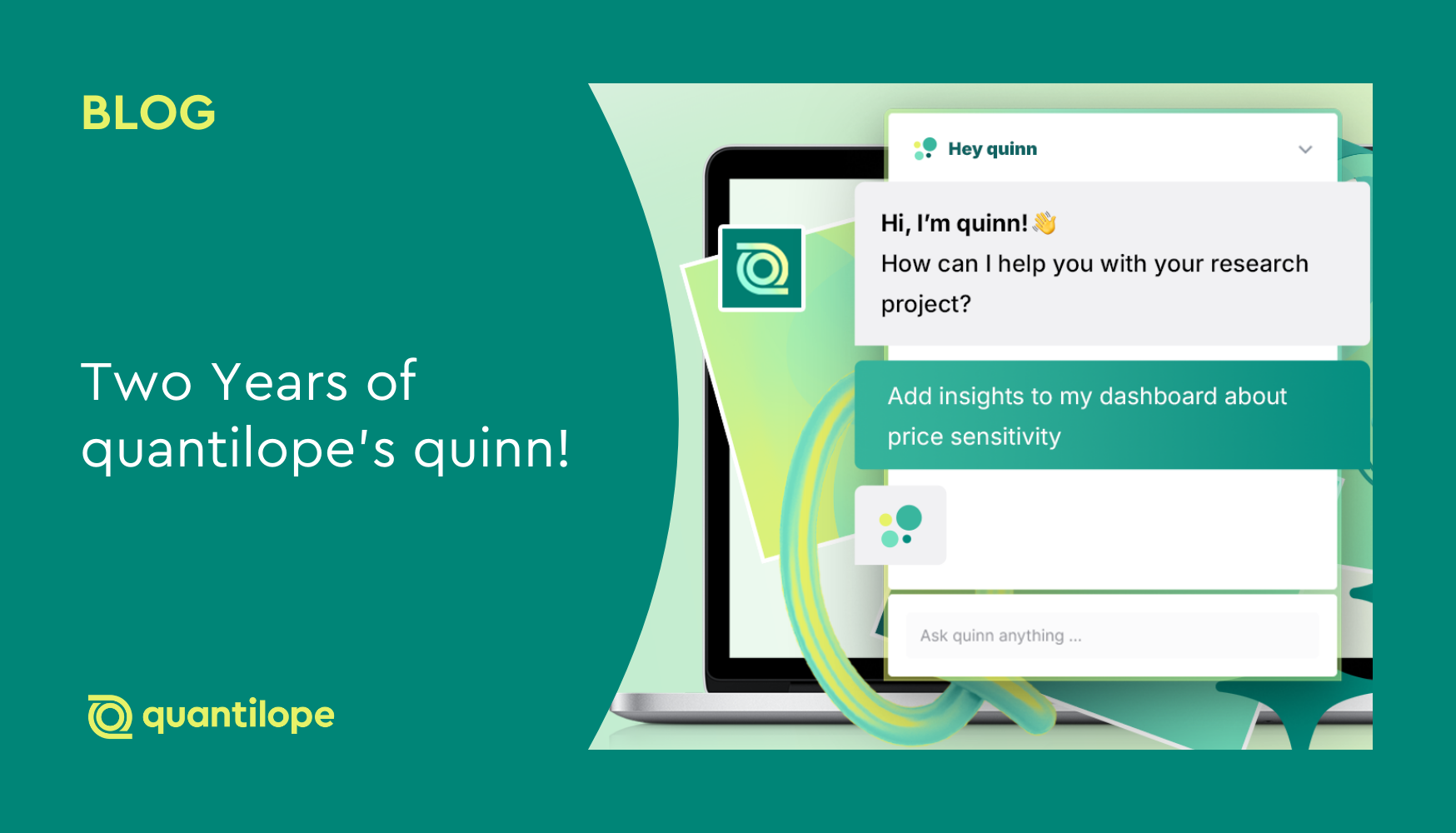We all know the phrase, ‘Don’t fix what’s not broken’. But what if it was something that might not be broken, but had the potential to be a whole lot better?
This is a phenomenon that many companies face - very often; they’ve been doing market research for decades, through their tried-and-true research designs, historic questionnaires, and standardized data analysis. In their defense, the insights gained from these ways of research have probably been useful to their business in some capacity - providing clarity and direction into consumer behavior to guide their business.
What these companies don’t know, is those insights could be made that much richer through the use of automated, advanced research methods that take consumer findings from ‘fine’ to ‘first-class’.
Below are five responses you can use when you hear ‘Our current research process is fine’ from someone within your organization, when really, you know there's room to grow:
Table of Contents:
- It takes too long to act on insights
- It’s using up valuable budget we could leverage elsewhere
- It isn’t collaborative enough to work simultaneously with colleagues
- It doesn't include advanced methodologies for added-layer insights
- It isn't always actionable, requiring us to duplicate our research efforts
- Steps you can take to improve your research process
- How quantilope can help enhance your research process
It takes too long to act on insights
Traditional ways of research (aka, the way your company may have been doing research for the past 20 years), aren’t built to keep up with the pace of today’s consumers. Consumers have information at their fingertips at any moment of the day, in any place - meaning their perceptions of a brand could easily shift upon reading a bad product review while shopping in Target or checking a new salon’s Instagram comments as they walk by it to see if they should make an appointment.
By the time companies run traditional research studies and review the results, consumers could already be on to the next big thing, proving why these approaches are outdated. With modernized research platforms, brands can instead capture consumer feedback in real-time. Set up your questionnaire directly within the research platform, connect your sample (be it your own, or through a panel provider), and watch responses populate your data analysis charts as soon as they come in. Real-time data might be what ultimately helps a company put a product on the shelf, or pull the product back to R&D to fine-tune it before wasting a valuable investment... which brings us to the next point - research can be expensive!
Back to Table of Contents
It’s using up valuable budget we could leverage elsewhere
Market research is one of the best investments you can make for your business. However, it doesn’t have to cost you an arm and a leg to benefit from research data.
Traditional ways of research are expensive because of all the various teams involved in the research process - client teams, programming teams, data processing and cleaning teams, reporting teams, and so on. All these teams need to bill for their valuable time, which can quickly add up for a single research project.
Instead, what if you took all those traditional-vendor complexities and fees and instead invested in a research platform that housed all these end-to-end research processes? With all your research in one centralized location for (often) a fixed fee, you could invest some of your budget on other initiatives, such as additional quantitative research studies, supporting qualitative focus groups, or the investment needed to reach a niche, specific group of people as part of your sample size. These platforms are built so you can accomplish all of the research tasks in one place, allowing you to save precious funds when experts in each area (programming, data processing, etc.) don't need to be part of your process.
With modernized ways of research, businesses have the power to make their budget stretch much further. As a result, stakeholders can have much more in-depth information to help inform key decision-making. Who wouldn’t want that?
Back to Table of Contents
It isn’t collaborative enough to work simultaneously with colleagues
Is your team still working with color-coded documents that have comments all in the margins and struck-through question text that makes it difficult to even tell what the final version is? We have news for you - there’s a better way.
With online research platforms, there’s no back-and-forth document editing, waiting for colleagues to review, or version control issues that are often caught just a bit too late. Platforms like quantilope allow you to collaborate with colleagues in real-time. That means, as soon as you make an edit to a survey in New York, your colleague in California is seeing the reflected change. Tag each other in comments for review or feedback, simultaneously work on different sections within a survey, run through the test link at the same time, and monitor results together as soon as respondents begin to complete the survey. Collaboration doesn’t need to require an extended timeline.
It doesn’t include advanced methodologies for added-layer insights
If your research process is ‘fine’, that probably means you’re missing valuable context about your target audience. When done properly, advanced research method findings are rarely described as just ‘fine’.
Advanced research methods go beyond basic usage and attitude questions to uncover underlying meanings as to why consumers act the way they do - some even with the ability to uncover subconscious thoughts! (check out implicit research techniques here).
Traditional research firms might use advanced methods, but often these types of insights rely on separate behavioral science teams and can take weeks to execute and add a hefty price tag. Meanwhile, quantilope makes advanced insights accessible to researchers of all backgrounds with a simple drag & drop library and pre-templated studies. No need to have a degree in statistics or behavioral science to gather detailed, actionable insights using our automated TURF, MaxDiff, Key Driver Analysis, Price Sensitivity Meter, A/B Testing, and several more.
It isn’t always actionable, requiring us to duplicate our research efforts
Perhaps the scariest circumstance of all: when you invest time, money, and energy into market research, wouldn’t you want to ensure you get the most in-depth, descriptive, and actionable results possible?
Older ways of research sometimes limit the types of quantitative data questions you can ask, how long your survey can be, data collection methods, or the types of charts you can use in a research report (i.e. whatever PPT can support). With newer market research technology such as automated charting, automated significance testing, and real-time reporting, businesses know they’ll be getting the best quality insights possible for stakeholders to ensure their outputs will be the best ones to guide their business.
Real-time charting means insights teams can monitor research question feedback as it comes in, and if the data isn’t producing actionable findings, they can pause the study, make adjustments, or change the questionnaire altogether without delaying fielding time by much.
For example, perhaps early research findings indicate that respondents are confused by a certain question, so they pause the study, add some background information before the question, and start fielding again in a matter of minutes (rather than having to run an entirely new study in order to capture that metric). Instantly, you take a question that would have been useless in reporting to one the brand can actually leverage in answering a research problem for stakeholders.
Steps you can take to improve your research process
If you’re ready to take your research process from ‘fine’ to ‘first-class’, follow these steps to gain traction among your key decision-makers:
Explore your options
Any good research professional knows you have to gather information before proceeding with a decision. The same goes when looking to improve your research process. Start by exploring new, modernized research solutions available to you - considering things like pricing, features offered, the type of research supported, consultative research support, and reporting options. Understand the value you’ll gain from migrating to a new consumer research platform or solution, such as advanced methodology findings, a quicker end-to-end research process, data visualizations, brand health tracking abilities, and more.
When searching for research options, consider research journal articles, case studies, published research papers, online reviews, and more.
Book a demo
Once you’ve narrowed down a list of potential vendors that might suit your needs, book a demo and see it for yourself! A live demo will show you how the platform or solution works, if there are any shortcomings for your specific research needs, and what kind of customer service or support will be offered to you as a client.
Present your case
As a final step to improving your research process, you’ll need to get your stakeholders or other key decision-makers on board. Some platforms offer free pilot studies that you can actually take right to these individuals and showcase the value of switching research vendors. Ask potential vendors for firm metrics such as expected return on investment, research hours saved, an example of a research proposal, and more.
How quantilope can help enhance your research process
quantilope’s end-to-end Consumer Intelligence Platform removes the common headaches from traditional, older ways of research. With templated surveys, drag & drop question libraries, 15 automated advanced methods, panel agnostic functionality, real-time charting, and live dashboards with automated significance testing, we’re pretty confident you’ll never turn back.
quantilope clients have their choice between fully DIY use of the platform, assisted service, or fully managed services from our team of classically-trained research consultants (aka, they’ve been in your shoes, and know your frustrations).
Get in touch for a live demo, or to start your first automated consumer research project on quantilope’s platform!




.png)